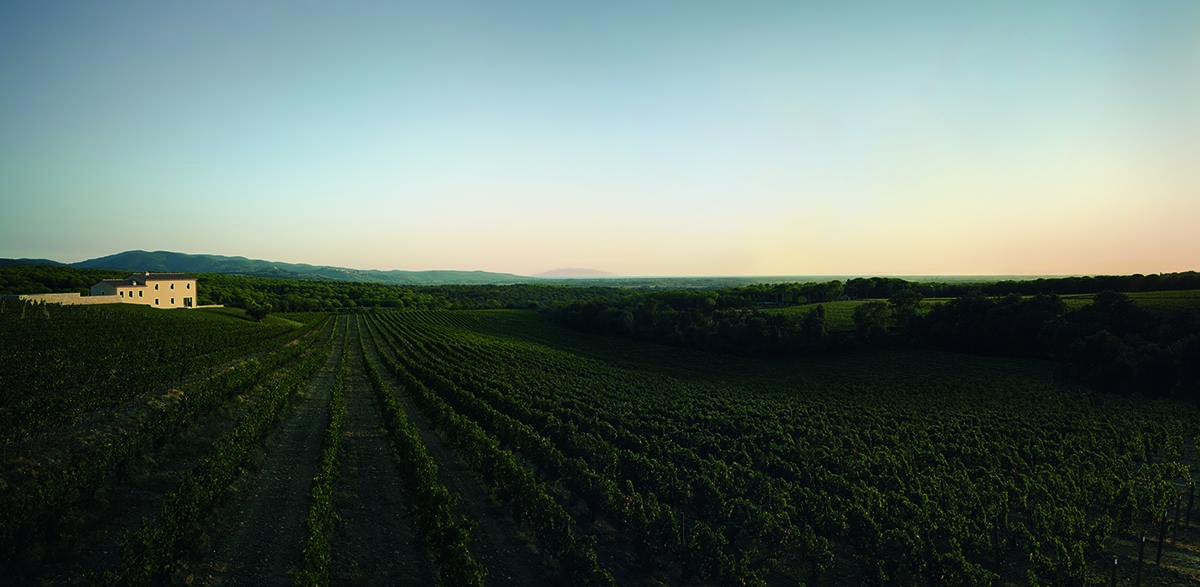
The vineyards of Masseto slope down towards the sea from the mountains of Tuscany’s Maremma region
Masseto, Italy’s most celebrated wine, is made from spectacular vineyards by the Tuscan coast, backed by ancient forests, looking out over the Mediterranean. This spring, it received a stunning new winery, whose wonders are all contained underneath the blue clay soil, as Darius Sanai, one of the wine’s most obsessive aficionados, discovers
Photography by Marius W Hansen
As you approach the Masseto winery, the overwhelming feeling is one of luminescence. There is a glow from above, and behind, as if the narrow road you’re driving along is the entrance to some new, celestial world.
Follow LUX on Instagram: the.official.lux.magazine
There are three shades to the luminescence. The piercing blue of the sky (the sky always seems to be blue around here in the Maremma, the coastal strip of Tuscany halfway between Pisa and Rome); the deep primordial green ahead, which emanates not from the vineyards that surround you but from a thick forest on the mountains in front, forest that looks as wild as it must have been in prehistoric times, with little or no sign of human intervention; and then there is a silver, which seems to come from a different direction altogether, subtle but enveloping. As the road heads up the slope through the vineyards and towards the new winery, you feel that you’re about to be welcomed through into another world.
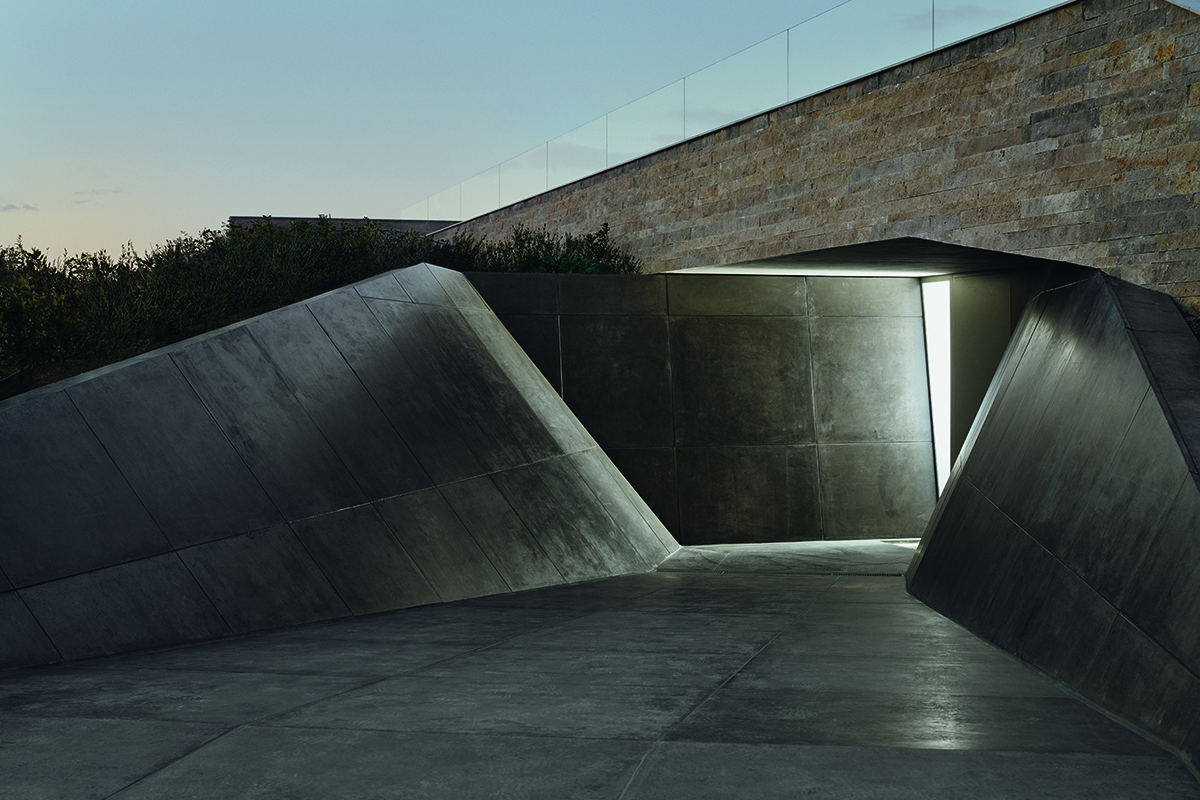
The entrance to the new winemaking buildings at Masseto winery
All this makes the entrance itself to the new winery, which opened this spring, even more remarkable. Rather than a great ziggurat to commemorate the otherworldly location of the home of one of the world’s greatest wines, you are greeted by a building that seems to sink far into the mountainside.
And this, perhaps, is the point. It is only when you enter between the stone sentinels at the entrance to the new winery, and disappear into the blue clay soil, that the adventure really begins.
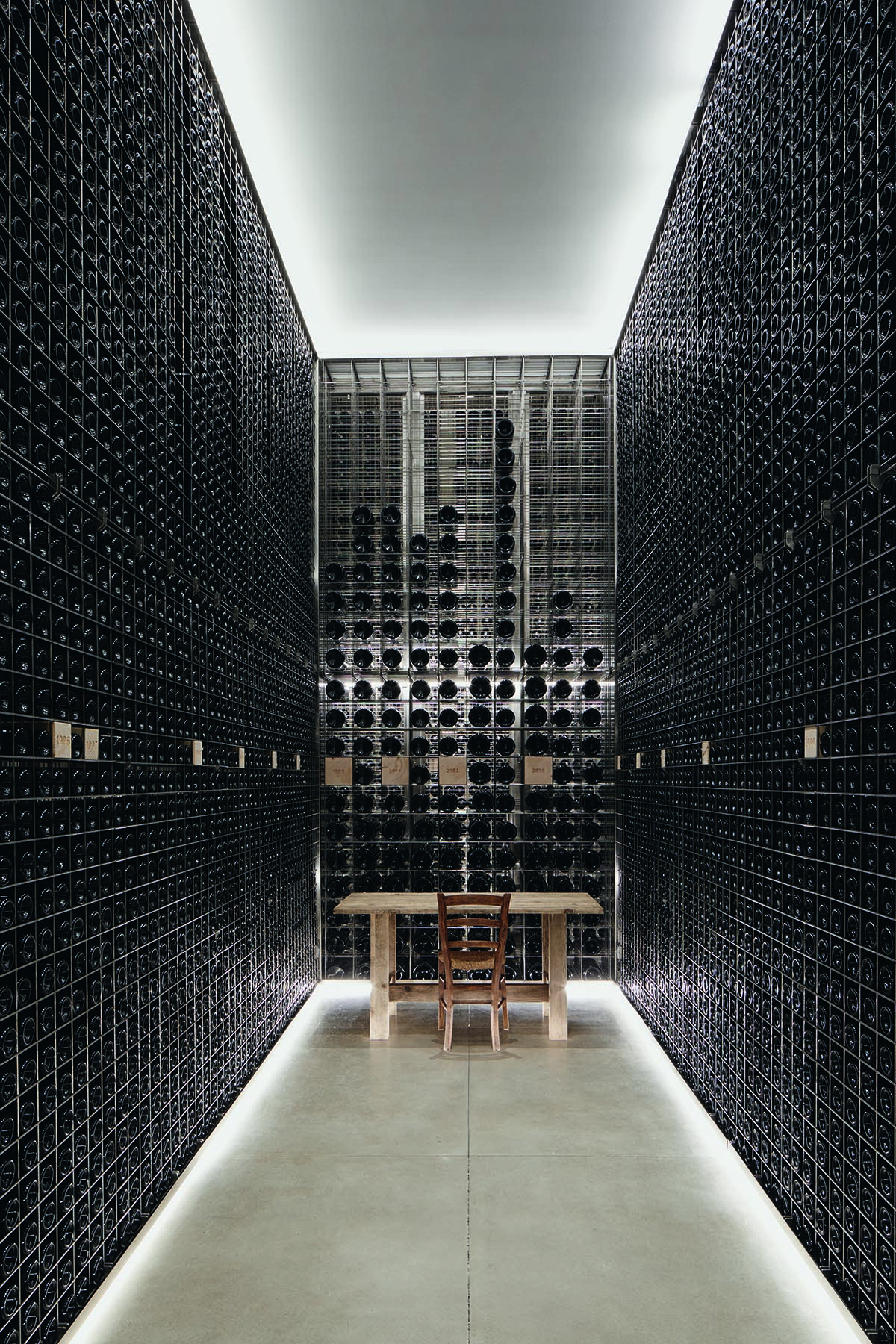
Masseto is perhaps the only Italian wine that has passed into the pantheon of high-luxury brands. It is a wine venerated by connoisseurs, while its serving is also seen as a mark of the ultimate respect by those with just a passing interest in wine, along with names like Pétrus, Lafite, Latour and Domaine de la Romanée- Conti – all the others are French. All the more remarkable, since Masseto has only been a wine since 1987. And since its birth, until the opening of the new winery in 2019, it has always been seen as the ‘big sister’ wine of Ornellaia, made on the same premises.
Read more: Karl-Friedrich Scheufele on Chopard’s partnership with Mille Miglia
This spring, Masseto finally received its own home, distinct from its sister wine, a few hundred metres away on another part of the same slope. The new winery is one of the most striking creations of anything in the increasingly rarefied world of fine wine.
Amid the vineyards, there is a beautiful classical building, terraced, with views across the vineyards and to the Mediterranean Sea, just a couple of miles away. It is the sea that gives Masseto’s vineyards their luminescence, and the wines themselves a kind of olfactory luminescence, lifting up and away, balancing the richness and power and complexity with a kind of angelic delicacy only the very greatest wines in the world can achieve.
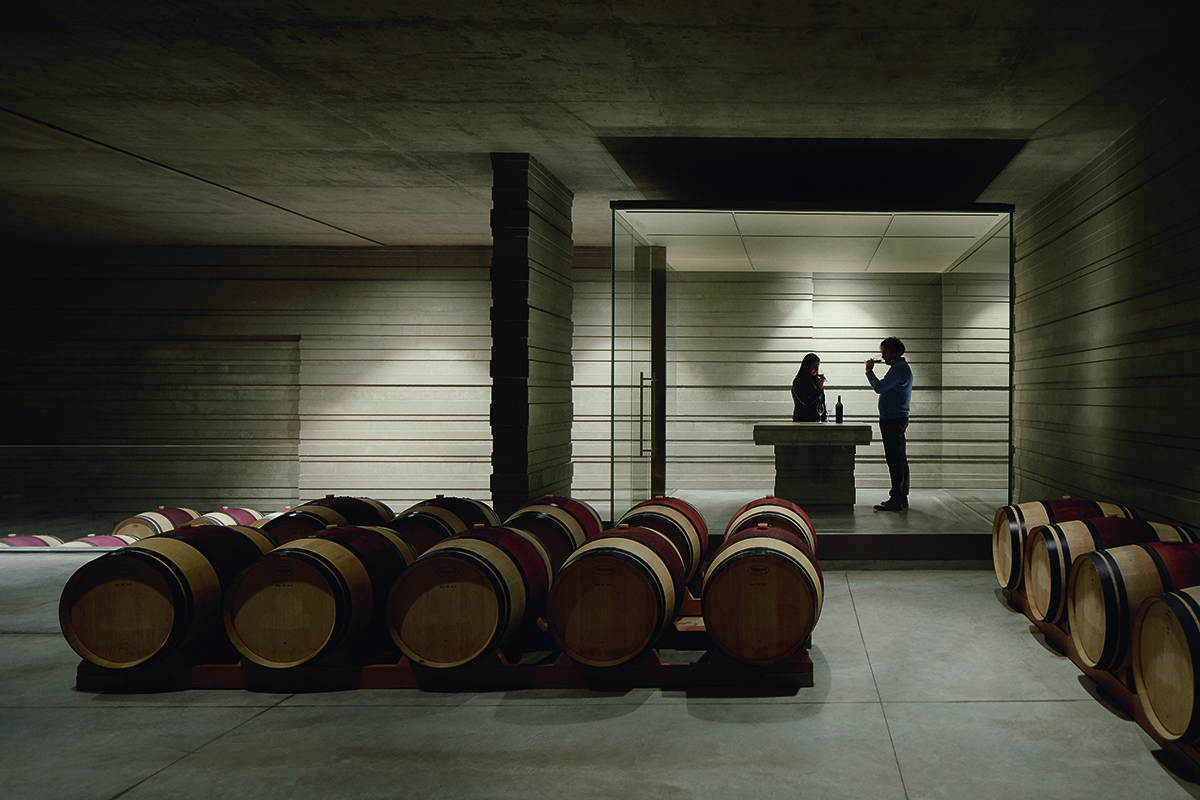
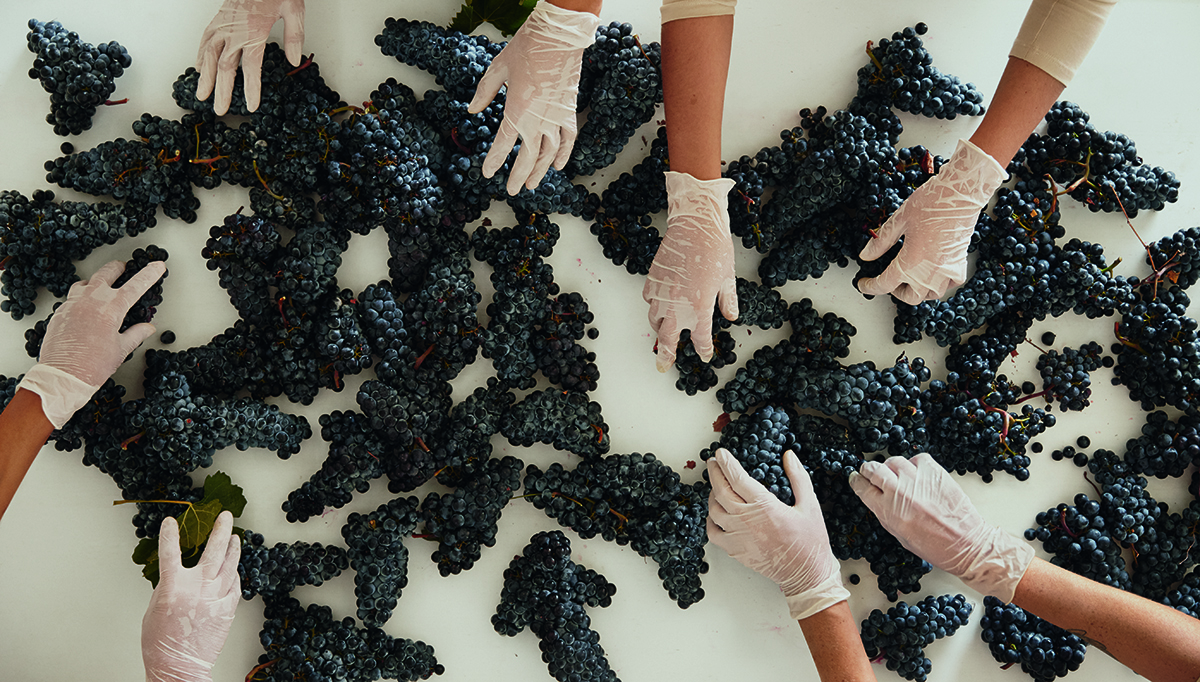
The glass-cube tasting room, and some of the merlot grapes harvested from the vineyard
But enter inside, and underground, and you are in a different universe. The landing area drops away to a vast, concrete-lined chamber, more redolent of a modern Abu Simbel in ancient Egypt than of a place where wine is made. Rows of wooden barriques line the room; everything is perfect, geometrically, but also puzzling, as if you have entered a kind of contemporary MC Escher drawing. A concrete wall swings open to reveal a room lined with what seem at first to be beautiful black tiles, but turns out to be the ends of Masseto bottles, stored geometrically in racks, black against the grey of the stone. Most remarkable of all is a glass tasting room, a cube in the middle of the winery, where you can taste wines looked on by the wines themselves, buried in the deep underbelly of Tuscany.
The architecture is the creation of Milan-based firm ZitoMori Studio. Masseto CEO Giovanni Geddes da Filicaja comments: “Years of planning and effort have been dedicated to building the right home for Masseto. One that consolidates three decades of experience, where every aspect has been designed to meet the winemaking team’s highly detailed requirements.”
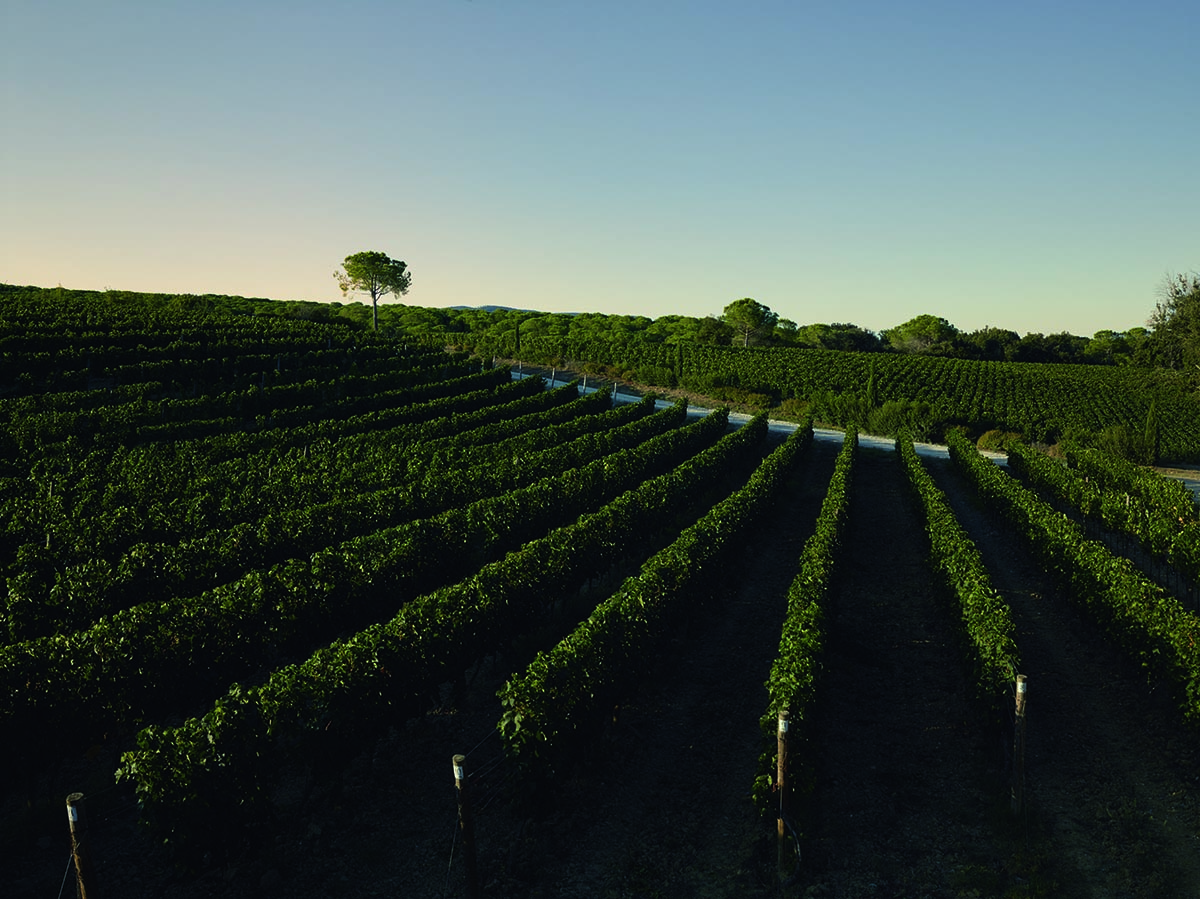
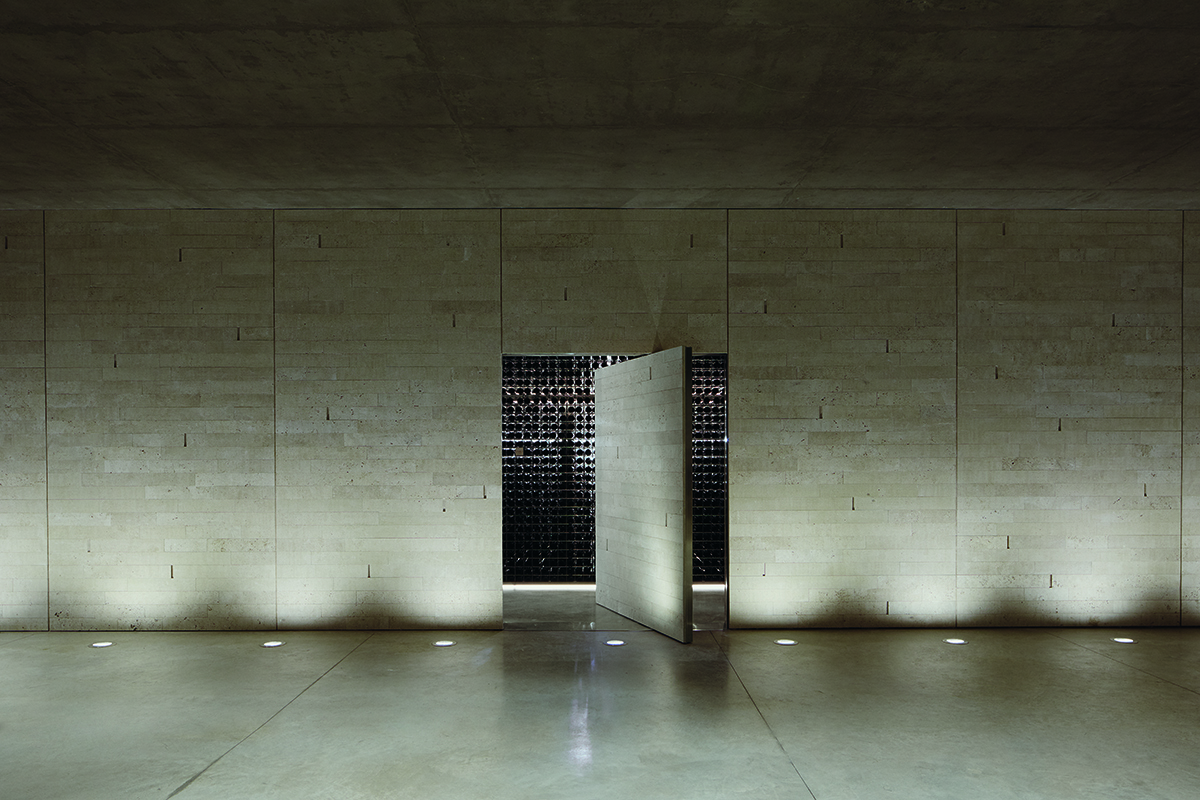
The orderliness of the vineyards outside are matched by the clean and uncluttered design of the new winery buildings

Giovanni Geddes de Filicaja, CEO of Masseto
Commercial director Alex Belson comments about the architecture: “The architectural brief specified the winery must be a masterpiece in its own right. Quite simply, we needed to give Masseto the home it deserves and its own architectural identity. The brief also stipulated the winery must have minimal visual impact, and that the existing Masseto House (a classified building on the hill above the vineyard) be restored with integrity and to meet Italian architectural heritage requirements.”
To do this, says Japanese-born architect Hikaru Mori, “We created a series of spaces, not by construction but by extraction from the hill’s monolithic mass. The diverse internal volumes, heights and levels are reminiscent of a gold mine as it follows seams of precious metal to the core.”

Axel Heinz, Masseto’s Estate Director
But the architecture would mean nothing without the wine, and Masseto is a wine that is even more special than its setting. Axel Heinz, the estate’s director, has been in charge of the winemaking since 2005 and he says, “The core of Masseto, its warp thread, is a Mahler symphony played by a full orchestra. The weft is a small chamber music ensemble. It’s that orchestral power that needs very careful handling. It has to be balanced by the softer elements, which add complexity. People sometimes describe Masseto as single vineyard wine, but it’s not. There’s an incredible range of plot expressions and different proportions of clay, gravel and earth. It’s more like an intricate patchwork, with the blue clay at its core.”
Heinz also pays tribute to the importance of the sea, both in the light it donates to the vineyards, and the cooling breezes that temper the summer heat and give the wine its freshness, however ripe the vintage. But like the greatest wines, and the greatest poetry, and the greatest vistas, you cannot analyse the beauty of Masseto. It comes from the soil, the grapes, the winemaking, the weather, the microbiome of the earth, the human appreciation of the aesthetic, both in taste and in vision.
For me, Masseto shares with a handful of wines the distinction of being rich, powerful and deep, and also feather light, almost transparent. A big, rich red wine that lifts you up, with a thousand nuances. Different vintages have different characteristics, but there is a commonality in this lightness of being that differentiates it from any other wine I have had from Italy, and which it shares with a clutch of peers at the tip of the world wine tree. Grape variety is irrelevant here. One or two of the great Napa Cabernet Sauvignons have it, as do a handful of top Bordeaux names, and the greatest (and eye-wateringly expensive) wines from the likes of Domaine de la Romanée-Conti, Domaine Leroy, Mugnier and Armand Rousseau from Burgundy. In the context of many of these peers, Masseto, whose price has rocketed over the past few years, seems positively decent value.
And none of them have a view of the Mediterranean across the coast of the Maremma. It’s going to be fun tasting future vintages in that glass tasting room.
Find out more: masseto.com
This article was originally published in the Summer 19 Issue

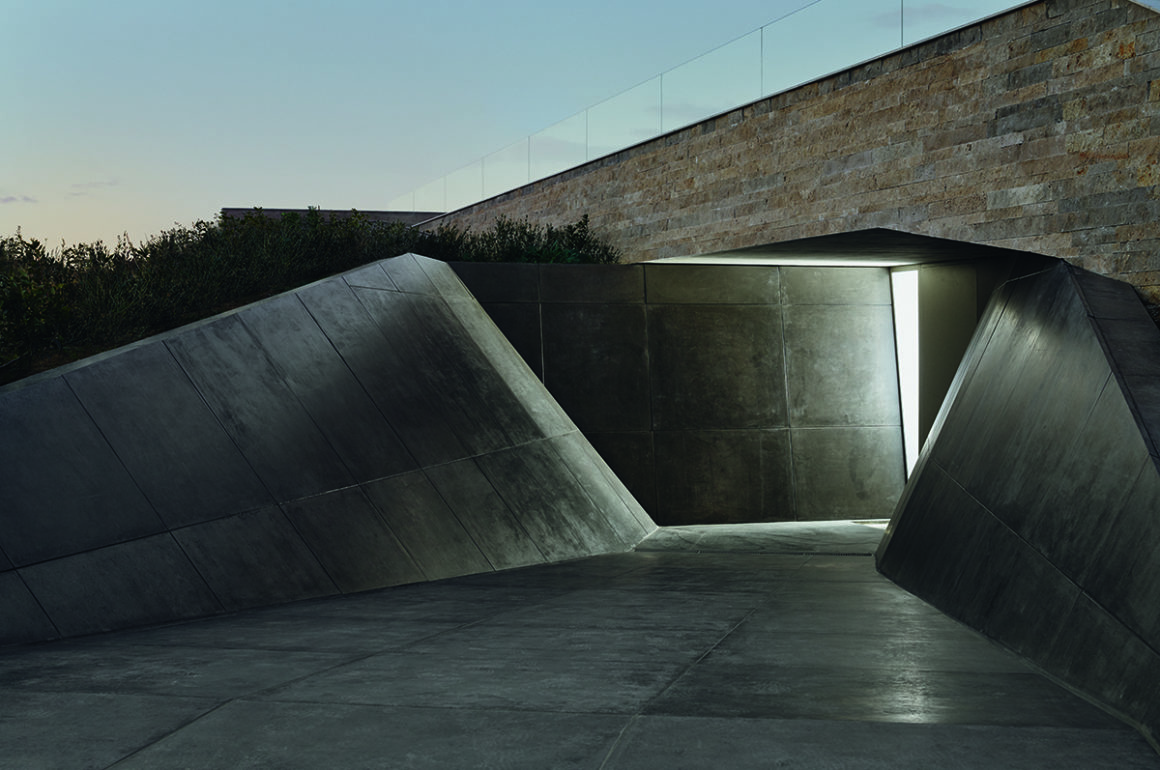





Recent Comments